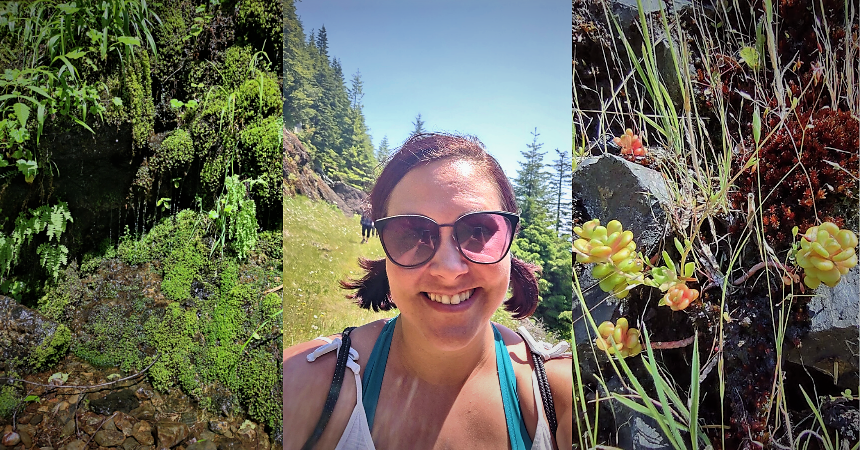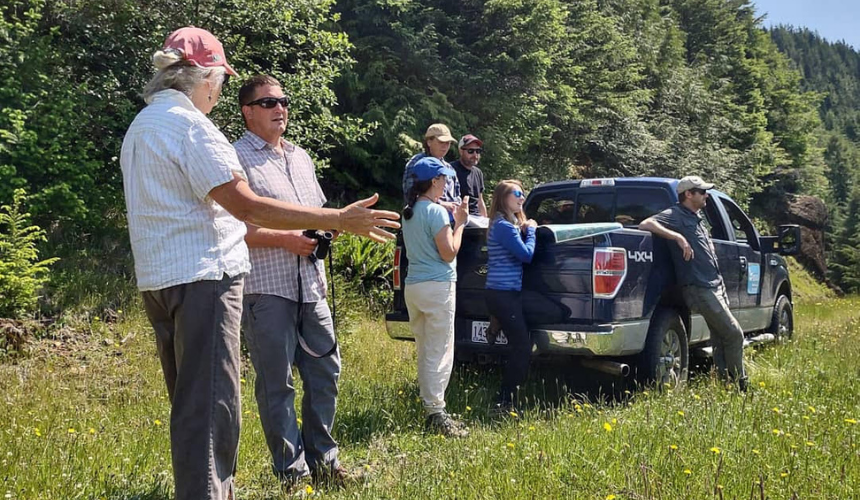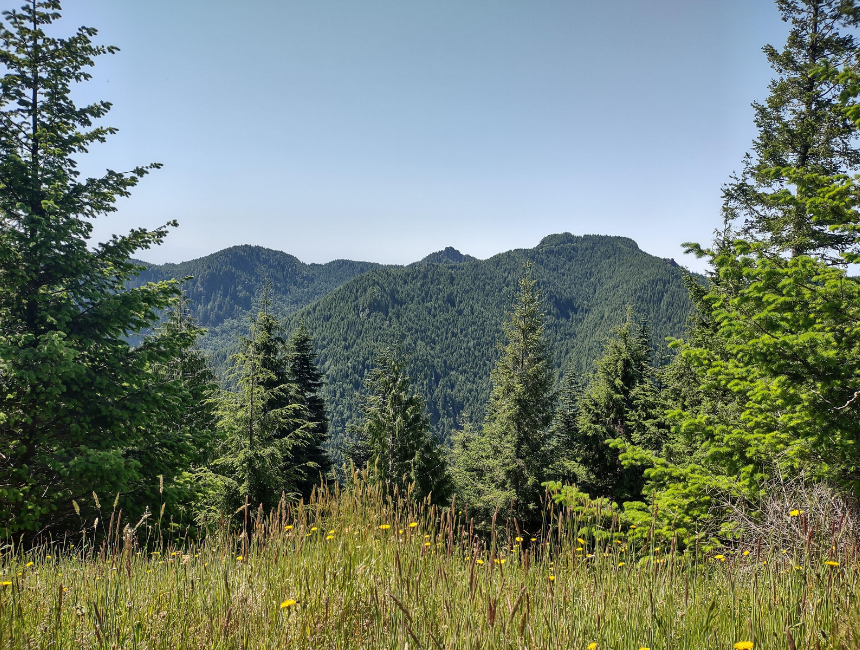
By Katherine Lacaze, NCLC Communications Coordinator
Last week, on the day following the 2021 Summer Solstice, I had a monumental experience as a North Coast Land Conservancy employee: visiting the proposed Rainforest Reserve.
I was brought onto the team in the middle of 2020, and in 12 months of working in communications, I’ve become fairly well acquainted with this incredible campaign through pictures, videos and a wealth of documentation collected by other staff members and volunteers. Over the past 10 years, since NCLC first set its sights on conserving this land, they have spent hours upon hours exploring, learning about, making observations and leading tours on these roughly 3,500 acres of temperate rainforest tucked within the coastal range.
Using their photos, insights, stories and words, I’ve been privileged to share about the Rainforest Reserve on our social media and through various publications. However, between the COVID-19 pandemic, high wildfire risk in Oregon, and road closures in the late fall, I had yet to experience this supposedly magical place with my own eyes. Until now.

The NCLC crew visiting the proposed Rainforest Reserve.
On a warm Monday morning in June, we started out driving along logging roads and creeping up toward Onion Peak, which is part of a conservation easement and not open to the public. During this drive, Katie and Morgan shared maps and pointed out certain features of the land, as well as the location of significant natural landmarks, such as Cape Falcon and the Angora Peak Complex, a section of which will become part of the Rainforest Reserve. Even from the car, I could see stretches of trees spreading over the land like a thick verdant blanket. Meanwhile, views of the Pacific Ocean to the west and other iconic mountain ranges to the south and north became more prominent as we climbed into the peaks.
I’ve been increasingly familiarized with the ideas of long landscape conservation and connectivity and the importance of establishing a summit-to-sea connection here on the coast. Yet the sweeping views that I saw from the Rainforest Reserve were a visual manifestation of why all of that matters. When you drive from place to place on a daily basis, watching miles disappear in a matter of minutes, it’s easy to start thinking of towns, valleys, beaches and other spots as distinct destinations. But when you’re standing high upon a ridgeline, perceiving the land and the ocean as one continuous corridor stretching toward the horizon in every direction, there’s no denying that what you do in one location creates ripple effects in the surrounding area. That’s an incredible reality, but it also ups the ante on taking responsibility for our actions as individuals, an organization and a community.

Looking southeast from Onion Peak.
During our visit in the Rainforest Reserve, we made several stops and finally transitioned from driving to hiking so we could ascend further toward Onion Peak. Basking in the refreshing coolness surrounding a mountain seep, we marveled at such simplistic yet stunning beauty while Melissa and Amy wasted no time tracking down amphibians, so we could potentially add their name to our data about the property.
At this time of year, garish red Chamber’s paintbrush and native columbine are thriving alongside bright purple penstemon. We also passed multiple rock gardens that host little communities of plump Oregon stonecrop, which is, frankly, adorable. I even caught a glimpse of a black petaltail dragonfly, one of the rare insect species that inhabit the reserve.
It was fascinating to see several of these species firsthand during our trip—all the more so because I think I’ve started to view them as something abstract and separate from one another and the land. Within our data collection, I’ve seen the names of plants, trees, insects, amphibians and mammals separated into columns and lists, and then I research them individually to share information with the public. But here, in this physical space, there is no separation. They don’t exist in a vacuum as isolated entities but rather as part of a vast tapestry held together by coexistence and symbiosis. Within this very real and tangible network—at once massive and yet intricate—there is a sense of rightness to be found. A rightness that happens naturally, without intervention or manipulation by humans.

The Angora Peak Complex, a section of which will become part of the proposed Rainforest Reserve.
So, here’s something about me that’s probably worth confessing at this point: I’m a city-lover at heart. I absolutely adore the urban environments of New York City, Boston, San Francisco, Seattle and Chicago—to name a few. I love lights and architecture and movement and packed performance venues. And humans undoubtedly need a place to live, to work, to create.
However, we also desperately need beautiful, untouched spaces. More importantly, there are thousands of other organisms, plants and wildlife who need this land, and have a right to it. That’s a large part of why we do what we do, which is to create habitat reserves. It’s amazing what can happen when you conserve land, let it be, and simply allow it to evolve as it will. And sometimes land conservation requires a more hands-on approach. We assume a stewardship role, giving a little boost to native plants and wildlife that might be facing external challenges. However, we’re not building or devising something, or trying to make the land special or extraordinary in any way. Because it already is.
And that applies to the proposed Rainforest Reserve. There is already a magic to be found. Not the human-made magic that thrums through the vibrant streets of NYC or Disneyland or even an art museum.
It’s an organic magic that comes from a place being perfectly right, just as it is.
The Rainforest Reserve is whole and perfect, a slice of heaven that embraces and accepts us all—humans, insects, stonecrop and columbine alike. And it takes my breath away to think that it will always be that way once it is conserved in perpetuity.
Comments